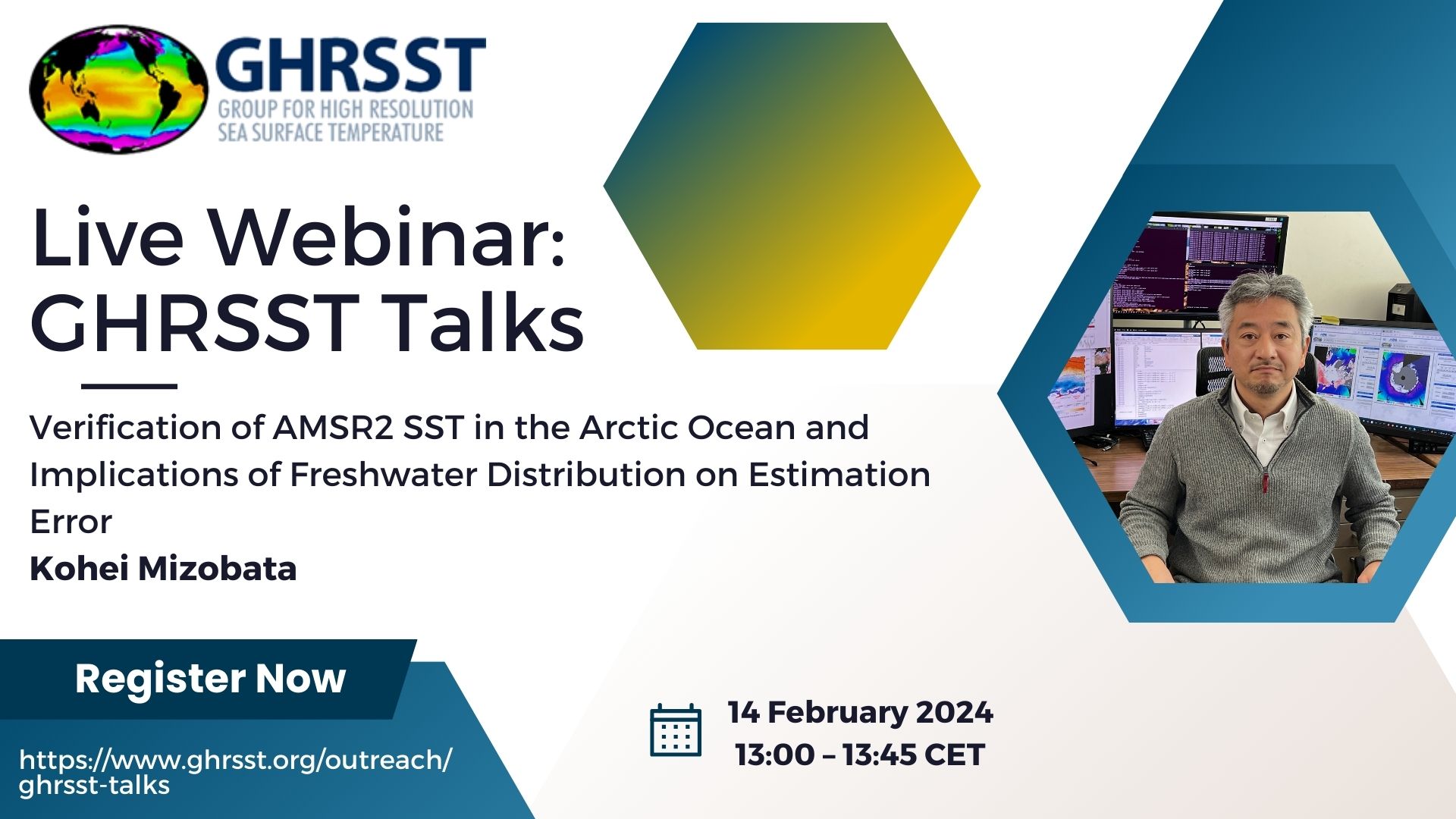Wednesday, February 14, 2024
Time: From 13:00 – 13:45 (CET)
(check your timezone https://www.worldtimebuddy.com)
Verification of AMSR2 SST in the Arctic Ocean and Implications of Freshwater Distribution on Estimation Error
Author: Kohei Mizobata
(1) Institution name and address, Author email address: Tokyo University of Marine Science and Technology, Kounan 4-5-7, Minato-ku, Tokyo 108-8477 JAPAN, mizobata@kaiyodai.ac.jp
Abstract
The accuracy of the latest AMSR2 SST estimates in the Arctic Ocean was investigated with iQuam ver2.1. For the standard product, 6.9 GHz SST, the RMSE (bias removal value) was 0.104K (Descending) and 0.132K (Ascending). For the research product, multiband SST, the RMSEs were almost the same, 0.102K (Descending) and 0.123K (Ascending). In the beta ocean (below 10°C), where salinity variability dominates with respect to density change, the RMSE worsens to 0.15 K (Descending) for the 6.9 GHz SST. The underestimation of SSTs for both products is particularly significant in the Beaufort Gyre region of the Arctic Ocean, which shows a warming trend of around 0.1K. In other words, while cloud-free microwave radiometer observations are extremely powerful in generating the Climate Data Record, long-term data including SST data from the AMSR series may lead to underestimation of the warming trend.
In this study, we focus on the salinity-dependent brightness temperature change in the low-temperature region as the cause of this non-negligible underestimation.
The AMSR2 standard SST is derived from the relationship between the 6.9G-V brightness temperature and SST given by Fresnel’s equation and the complex dielectric constant of Klein and Swift (1977). Here, we focus on the dielectric constant that causes the change in brightness temperature: the emissivity based on Meissner and Wentz (2004) shows a change with respect to changes in salinity, while Klein and Swift (1997) shows no change. The change in emissivity contributes to the change in radiance water temperature, but this effect is not taken into account, which may be the reason for the underestimation.
About Kohei Mizobata
Kohei Mizobata holds a Ph.D. in Fisheries Sciences from the Graduate School of Hokkaido University. Kohei has a background in Physical Oceanography, Satellite Remote Sensing (Altimeter, Microwave radiometer). His research interests lie in the field of ocean circulation, heat flux and heat content of the surface mixed layer in the ice-covered ocean (i.e., Arctic Ocean and Southern Ocean, and the accuracy of sea surface temperature.
Read more about Kohei Mizobata’s research and experience here.
Recording

